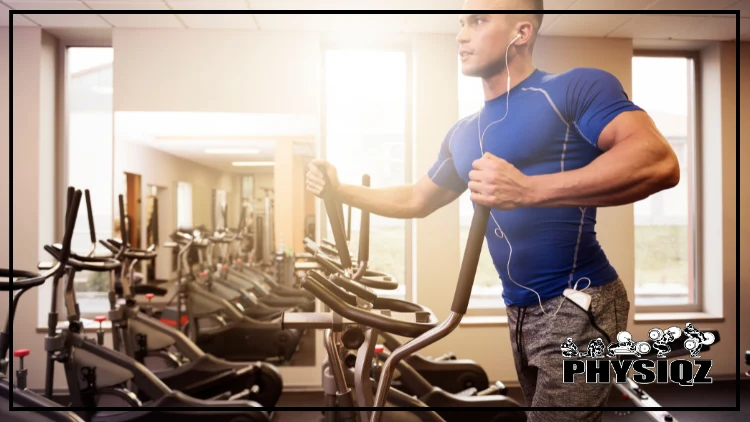
When beginning a new exercise plan, one may wonder if using an elliptical machine is worthwhile. In fact, studies show that an elliptical machine is a great option for warming up and for those looking for an effective, low-impact cardio machine, working various muscles and offering numerous benefits.1
That being said, we’ll review every muscle worked, how many calories can be burned on an elliptical, if they’re good for weight loss or muscle building, and how to incorporate them into any workout routine!
Which Muscles Does the Elliptical Target & What Are Its Benefits?
One of the key benefits of using an elliptical machine is the machine’s ability to work out both the upper and lower body making an excellent full-body workout.
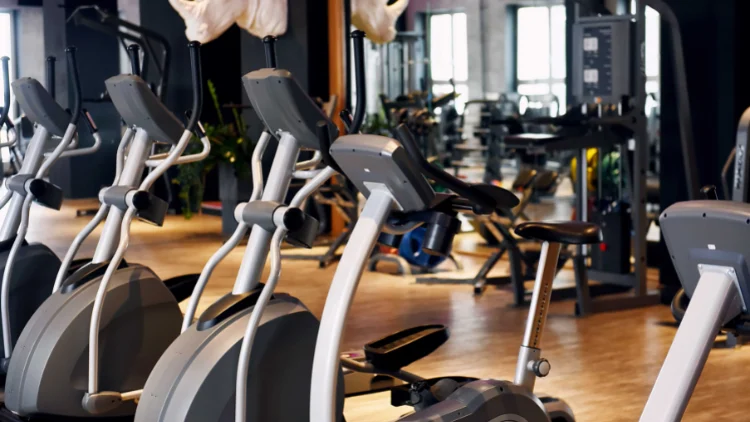
Source: Anna Tis via Canva.com2
Additionally, the elliptical is fairly low-impact and will put less pressure on one’s joints compared to other cardio exercises such as running outside and on a treadmill.3
Lower Body Muscles
The elliptical is an excellent lower-body workout. Research has even shown that the elliptical provides greater activation of the quad and hamstring muscles compared to walking and cycling.4
It’s possible to use the elliptical going forwards and backwards. As a result, someone might wonder which muscles are engaged when using the elliptical in reverse.
While both ways will impact all of the lower body muscles when going forward on the elliptical one’s glutes and hamstrings will be targeted more and going backwards the calves and quads get an extra boost.
Quads
The quads are composed of 4 muscles, rectus femoris, vastus intermedius, vastus medialis, and vastus lateralis, on the front of one’s upper leg. These muscles take up the most mass compared to other muscles in the body and are crucial in walking, standing, and jumping.
These muscles are activated by extending the leg at the knee joint, a common elliptical motion.
The quads are activated while pressing the machine pedal forward and down.
There are a variety of different exercises one can do to target their quad muscles, including the trap bar deadlift.
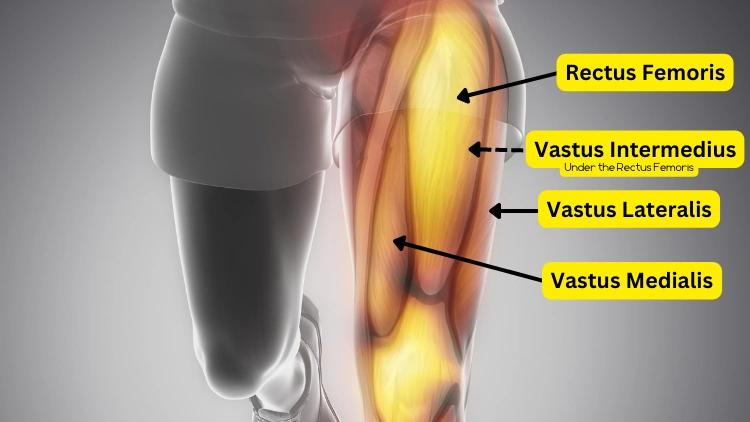
Source: janulla via Canva.com5
Glutes
The gluteal muscles, also more informally known as the butt muscles are also worked while using the elliptical due to the motion of raising the leg. To really target the glutes, one would need to increase the resistance on the elliptical machine.
The gluteal muscles are combined of 4 different muscles, the gluteus maximus, which is the largest muscle, gluteus medius, gluteus minimus, and the tensor fasciae latae. The glutes are important in standing, running, and supporting the body. Having strong glutes can help prevent knee injuries.
Also, there are a variety of knee-strengthening exercises that can be done to help after injury.
The glutes are activated using an elliptical when pressing the pedal forward and down.
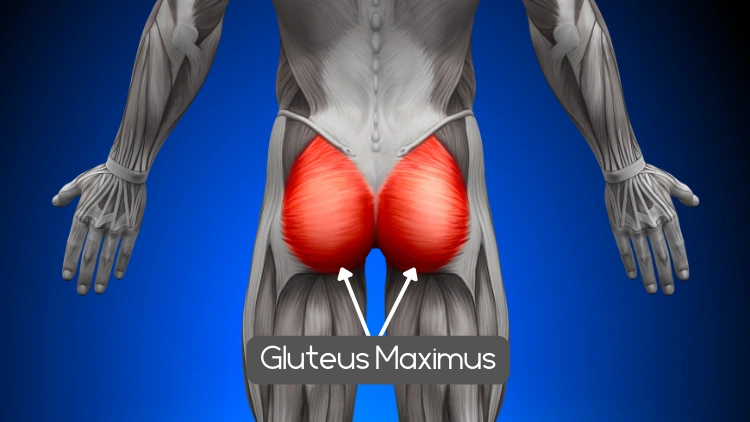
Source: decade3d via Canva.com6
Hamstring
The hamstring is the upper part of the back of one’s leg. It is composed of 3 different muscles, the biceps femoris, semitendinosus, and semimembranosus.
The hamstring is activated when the leg is flexed at the knee joint. Having strong hamstrings can help limit back pain, will increase mobility, and have a huge impact on overall strong legs.
If the exerciser is already experiencing any knee or back pain there are a variety of different mobility exercises that can be done. Here are the top 10 mobility moves to fix your knee, back, hip, and groin pain.
The hamstrings are activated when pressing the pedal of the elliptical forward and down and when the knee is flexed and the pedal is moving around.
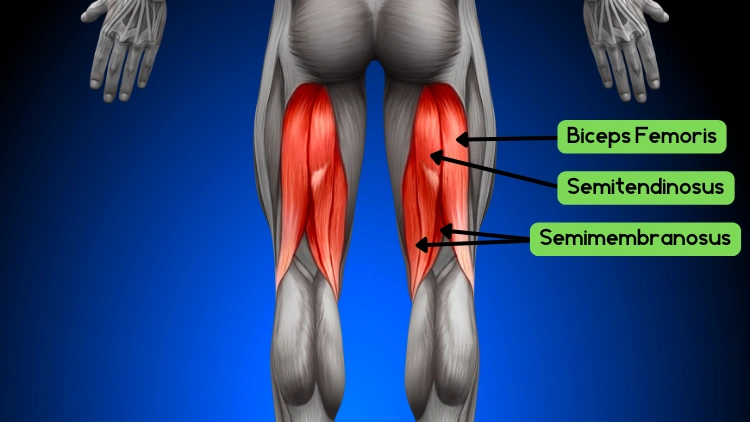
Source: decade3d via Canva.com7
Calves
The calf is the lower portion of the back of the leg. The calf muscle is composed of 2 large muscles- the gastrocnemius and the soleus.
These two muscles come together near the bottom of the calf so some people actually refer to these as 1 muscle with 2 different sections. The calves are very important in walking, running, and jumping.
The calves help push the pedal down and around.
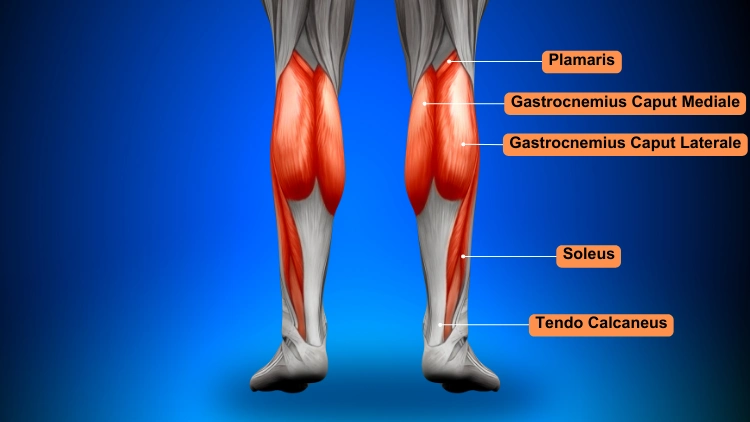
Source: decade3d via Canva.com8
Upper Body Muscles
The unique aspect of the elliptical is the ability to work out one’s upper body alongside their lower body. Understanding how the elliptical machine engages the lower body muscles is crucial, and it’s equally important to learn how it activates the upper body.
Here are some of the top upper body muscles worked.
Arms (Triceps & Biceps)
The triceps are the muscles found at the back of the upper arm, between the shoulder and elbow. The tricep is important in flexing the arm.
The triceps are made up of three parts, the medial, lateral, and long head.
The triceps are working when the handles are pressed away from and towards the exerciser.
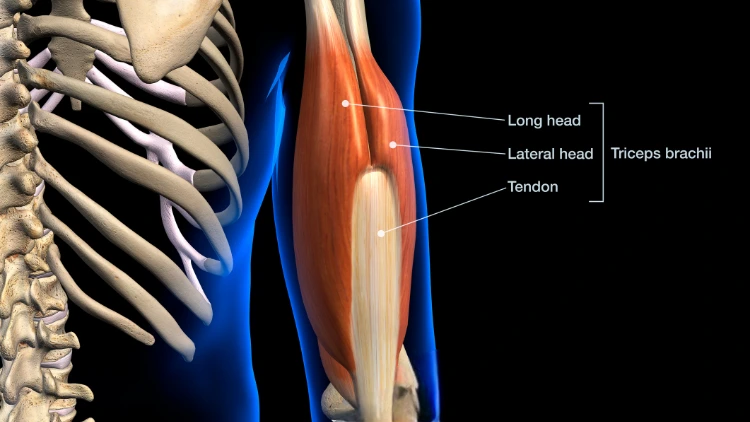
Source: Hank Grebe via Canva.com9
The biceps are the muscles found in the front of the arm between the elbow and shoulder. The muscle is composed of the long head and short head.
The bicep muscles are important in bending the arm.
The biceps work alongside the triceps while working out on the elliptical and are activated when pressing the handles towards and away. For another bicep workout, the reverse curl muscles worked list is extensive and could be another excellent way to target the biceps during a workout.
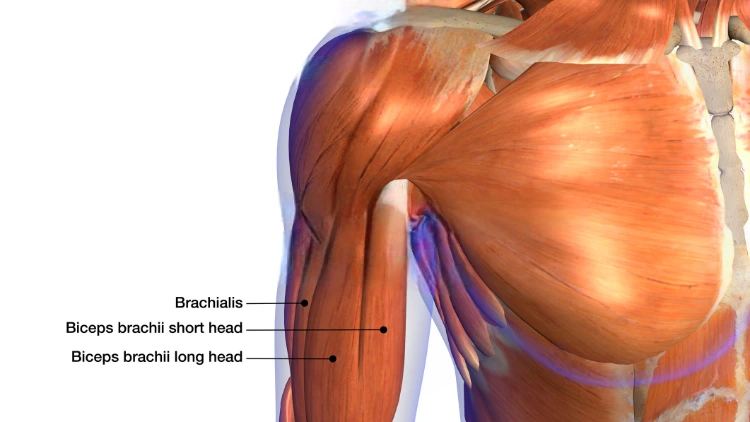
Source: Hank Grebe via Canva.com10
Back (Rhomboids)
The upper back or rhomboid muscles are found between the shoulder blade and spine and are composed of the rhomboid major and minor. The rhomboids are important in providing stability to the shoulders and are used to pull one’s shoulder blades together.
This portion of the back is activated with each turn of the handles while pushing the handlebars towards and away.
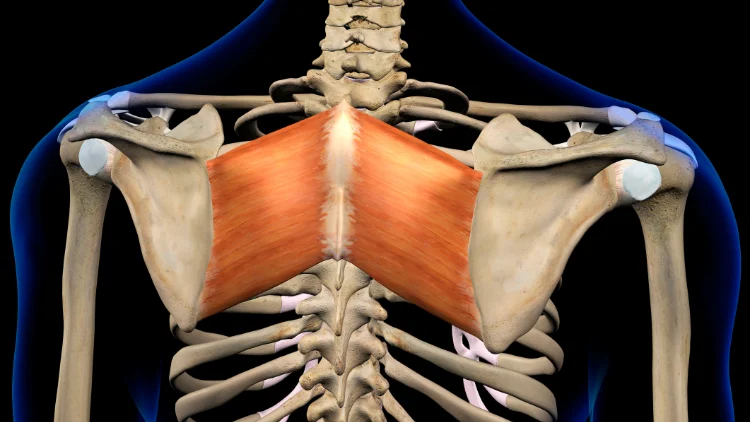
Source: Hank Grebe via Canva.com11
Chest
The chest muscles, commonly known as the pecs are composed of the pectoralis major and minor, with the pectoralis major being the largest. These muscles are responsible for moving the arms across the body and pushing the arms away from the body.
The chest muscles are activated while moving the handlebars of the elliptical in the rotation motion.
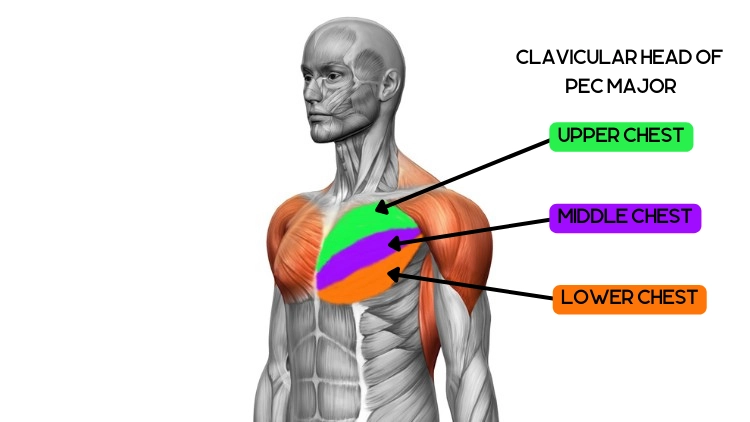
Source: Science Photo Library via Canva.com12
Core
The core muscles are composed of three different sections, the rectus abdominis, more commonly known as the “6-pack”, the internal and external obliques, or the side muscles. The core is crucial in balance, preventing back pain, and posture.
An important part of proper form while using an elliptical is standing tall and holding a strong core. By doing that, one’s core will be engaged and worked out while using the elliptical.
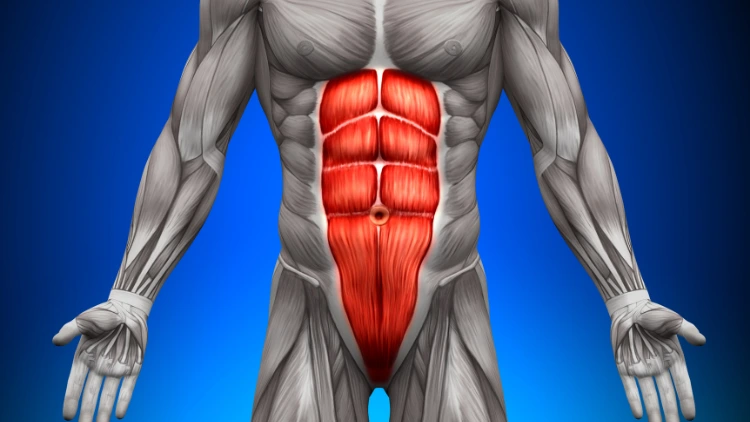
Source: decade3d via Canva.com13
Latissium Dorsi
The latissium dorsi or more commonly known as the lats are the muscles found on each side of the back. This muscle helps move the shoulder and rotates the body.
While using the elliptical the lats are activated while holding the handlebars.
The lats are one of the wide grip and close grip lat pulldown muscles worked and is an exercise to add width to the back.
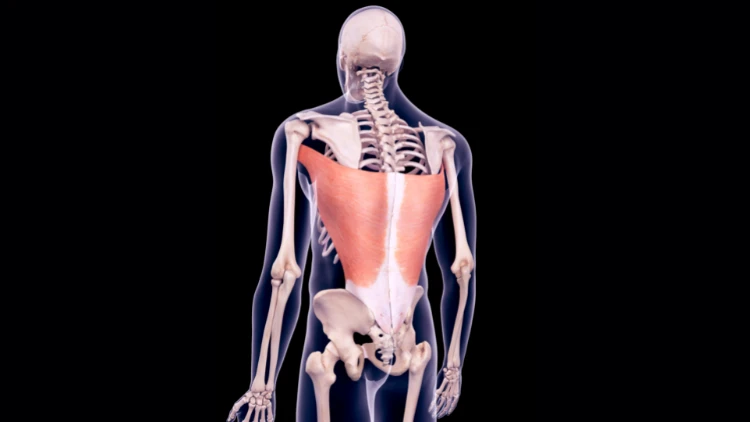
Source: Science Photo Library via Canva.com14
Shoulders
The shoulder muscles are composed of 4 different muscles, the supraspinatus, infraspinatus, teres minor, and subscapularis. These muscles work together to help stabilize the arm joint.
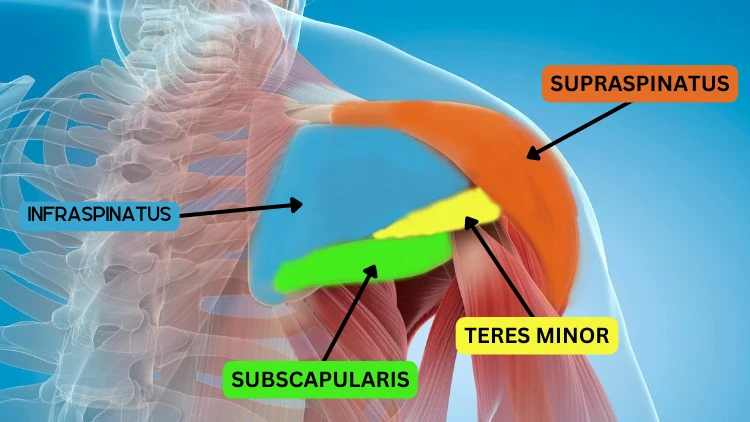
Source: Science Photo Library via Canva.com15
The shoulder muscles are activated while raising and lowering the arms on the elliptical. With the shoulder being such a flexible joint, having strong shoulder muscles is beneficial to support this joint and help prevent injury.
Which Muscles Are Affected by Incorrect Use of the Elliptical?
There are a few common mistakes one can make while using the elliptical with a big one being improper form. If someone is slouching and not standing tall while using the machine the core will no longer be activated.

Source: KVVS.Studio via Canva.com16
It’s also possible to not use the handlebars that move and instead hold onto the stationary handles which could put a larger emphasis on the lower body but will no longer work out the upper body.
Is the Elliptical Effective for Weight Loss? Does the Elliptical Burn Fat?
The elliptical may be a good option for those wanting to use cardio to lose weight and burn fat due to the fact that cardio and physical activity is crucial in losing weight and maintaining weight loss. 17
When considering the different cardio options one has available there are a number of factors to consider such as equipment availability and what someone will enjoy most, as finding enjoyment in physical activity has shown to be very effective in achieving long-term success and adherence to the plan.18
When looking at whether or not the elliptical is good for weight loss, it’s important to note that walking may be a better option for some people because it can be done anywhere, it’s easy to track the number of steps and the distance traveled, and walking 10,000 steps each day has been shown to have a positive impact on one’s physical and mental health and is beneficial for losing weight.19
Additionally, when embarking on a weight loss journey, research has shown the benefits of making adjustments to one’s diet alongside exercise to help aid with weight loss. 20 So while the elliptical could be helpful for weight loss, to see more significant weight loss, changing the diet would be important.
How Many Calories Can I Burn on the Elliptical?
While the number of calories burned will vary greatly based on the intensity, duration, individual’s body weight, age, and gender it is possible to burn between 200 and 400 calories per 30-minute session.
The below chart shows the approximate number of calories someone can burn in a 30-minute moderate-intensity workout on the elliptical.21
| Bodyweight | Calories Burned On Elliptical In 30 Minutes |
| 125 lbs | 270 calories |
| 155 lbs | 324 calories |
| 185 lbs | 378 calories |
Does Using the Elliptical Build Muscle? Is the Elliptical Good for Toning?
When considering the muscle groups targeted by the elliptical, one might also question its effectiveness for building muscle and toning. While the elliptical does target muscles from both the upper and lower body it may be better for toning muscle than building a lot of muscle.
The primary purpose of an elliptical machine would most likely be for cardio and burning calories. Burning calories and losing fat will significantly help one’s muscles become more toned.
When looking at ways to build muscle and gain strength using scientific principles that never change, other forms of exercise will be more productive than the elliptical.
For the elliptical to be an effective initial muscle builder and toner it’s important for the exerciser to increase the resistance level. Working out on the elliptical at a high resistance will activate all of the lower body muscles mentioned above and one will quickly feel the burn.
It is important to note that when comparing the activation muscles get from riding the elliptical it won’t compare to other strength-building exercises such as weightlifting and powerlifting.22 The elliptical on a higher resistance level may be a good option for a beginner looking to get some cardio alongside beginning to build some muscle.
Once past the beginner phase, other forms of exercise will be better for building muscle. Here is a helpful beginner hypertrophy program to try out to learn how to incorporate weight lifting.
Elliptical Advantages & Uses: What Are the Benefits of an Elliptical?
The elliptical is an effective cardio machine with a breadth of benefits. Here are the top 4 benefits of using an elliptical.
- Can Burn a Lot of Calories: Depending on body weight and intensity it’s possible to burn between 200 and 400 calories during a 30-minute session on the elliptical.
- Is Low Impact: Compared to other cardio machines, the elliptical machine is very low impact and is a great option for those who may have joint pain because of the low pressure put on the joints when using it.
- Full Body Workout: With the poles on the machine, one is able to engage their arms leading to an effective full-body cardio workout.
- Reduced Risk of Cardiovascular Disease: Cardio exercise is positively correlated to a reduction in the possibility of cardiovascular disease so making time for cardio is very important.23
When deciding how to fit a workout on the elliptical into one’s exercise plan there are a few things to consider such as what their long-term goals are. The elliptical could be great for cardio and initially toning muscles but if the ultimate goal is to build muscle the elliptical alone will not be best and should instead be used in conjunction with weight lifting or another strength-building exercise.
The elliptical is a great way to warm up the body before weight lifting. Additionally, it’s possible to create an effective cardio workout on the machine, especially with the resistance is higher.
Is Using an Elliptical a Good Workout?
The elliptical can be a good workout, depending on what the exerciser’s ultimate workout goals are. For someone wanting to tone their body and focus on cardio, the elliptical would be a good option because it is possible to burn a lot of calories in a short amount of time.
Additionally, the elliptical puts less pressure on one’s joints compared to other cardio machines so the elliptical would be a good option for someone who has any joint pain.
For those wanting to tone their muscles, the elliptical would be good as long as the resistance is higher. Once the resistance level gets about 6 or 7, the exerciser will really begin to feel the burn.
Additionally, research has shown intensity may actually be more important than the length of the workout.24
Finally, those looking to build muscle may be better off using the elliptical as a warm-up and instead focusing on other strength-building exercises such as weight lifting.
Is an Elliptical Considered Cardio?
Yes, the elliptical is a great cardio option that works out both the upper and lower body. It’s possible to burn between 200 and 400 calories in a 30-minute session.
Research has even shown that it’s possible to raise one’s heart rate higher while exercising on the elliptical compared to the treadmill.25 The elliptical also offers a low-impact cardio workout so it could be a better option for those who may have mobility issues or joint pain compared to other cardio machines such as the treadmill.26
It is important to note, to achieve a higher-impact cardio workout one would need to make sure the resistance is not at zero. There are a variety of different cardio machines to help determine which ones burn the most calories.
It’s important to find one that works best for you and your workout plan.
How To Use Correct Elliptical Technique & Program it Into Your Workouts
To get the most efficient workout on the elliptical it’s important to use the correct form. There are a few very important things to note while using an elliptical and here are the top 3 things to keep in mind to ensure one is using the elliptical with proper form.
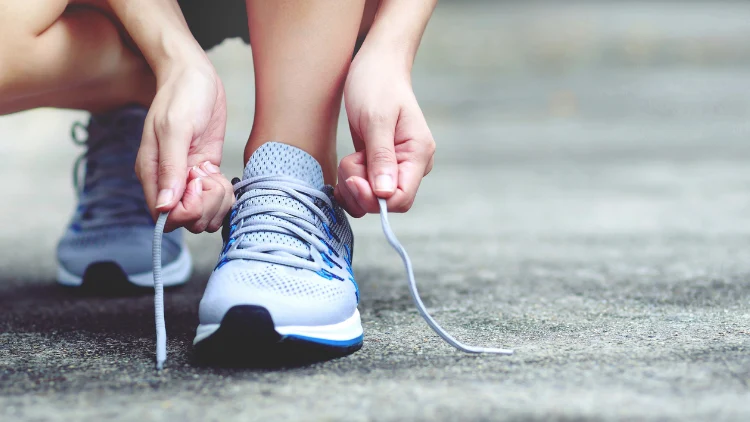
Source: rattanakun via Canva.com27
- Standing Up Tall: One of the most common mistakes one makes is slouching while using the elliptical because it can be easier to hold onto the handlebars and lean forward which makes the legs do most of the work. Standing tall allows one to engage their full body and use their core which can also help improve balance.
- Use The Poles: The 2 poles can be optional and one could instead hold onto the stationary handles but to get the most efficient workout and also target the upper body the poles should be used. The exercisers’ shoulders should be back, abs should be engaged, and the arms and legs should be working together.
- Weight on Heels of Feet: Another common mistake people make when using the elliptical is applying too much pressure onto their toes, which could make the toes and feet start to feel numb and may even begin tingling. Instead, one’s weight should be on the heels of the feet and kept close to the inside of the pedals.
Understanding the muscles targeted by the elliptical, the exerciser may also want to learn how to add variation to their workout plan and incorporate the elliptical. The elliptical would be an excellent way to warm up the entire body before lifting weights or engaging in a more high-intense cardio exercise.
It could be used as a cardio workout for those who are looking for a lower-impact machine that will still burn calories and tone their bodies. You may also find it interesting to check out some elliptical before and after results to inspire your holistic transformation.
The elliptical is a unique cardio machine because of the engagement of both the upper and lower body. When someone is curious about the muscles worked by the elliptical, it’s clear that this machine targets a wide range of muscles in both the upper and lower body.
Frequently Asked Questions
Can I Lose Weight Only Using an Elliptical?
Because it’s possible to burn many calories on the elliptical, it could be a good way to lose weight. To continue to see results, adjusting one’s diet could help someone see more weight loss.
How Often Do I Need To Use the Elliptical per Day To Lose Weight?
To lose 1 pound of fat, about 3,500 calories need to be burned, and because someone could burn close to 500 calories in 1 hour it would be necessary to work out on the elliptical for close to 1 hour to lose 1 pound a week with no changes to diet. Additionally, there are some potential problems and solutions to only losing a pound a week.
Is the Elliptical Good for Cardio?
Yes, the elliptical is a good low-impact option for cardio exercise and can be done by people of all ages, shapes, and sizes.
References
1Gpoint Studio. Canva. Accessed 20 April 2023. <https://www.canva.com/photos/MABt5rhVu2s-man-on-elliptical-trainer/>
2Tis, Anna. Canva. Accessed 20 April 2023. <https://www.canva.com/photos/MAEUi0ACTN4-elliptical-trainers-in-a-gym/>
3Kaplan, Y., Barak, Y., Palmonovich, E., Nyska, M., & Witvrouw, E. (2014). Referent body weight values in over ground walking, over ground jogging, treadmill jogging, and elliptical exercise. Gait Posture, 39(1). <https://pubmed.ncbi.nlm.nih.gov/24095267/>
4Prosser, L. A., Stanley, C. J., Norman, T. L., Park, H. S., & Damiano, D. L. (2012). Comparison of elliptical training, stationary cycling, treadmill walking and overground walking. Gait Posture. <https://www.ncbi.nlm.nih.gov/pmc/articles/PMC3299003/>
5janulla. Canva. <https://www.canva.com/photos/MADE-Sq7uLk-quadriceps-female-anatomy/>
6decade3d. Canva. Accessed 20 April 2023. <https://www.canva.com/photos/MADerAJvWMU-gluteus-maximus-anatomy-muscles/>
7decade3d. Canva. Accessed 20 April 2023. <https://www.canva.com/photos/MADerMxdfBI-hamstrings-anatomy-muscles/>
8decade3d. Canva. Accessed 20 April 2023. <https://www.canva.com/photos/MADerMxdfBI-hamstrings-anatomy-muscles/>
9Grebe, Hank. Canva <https://www.canva.com/photos/MAEJnzTxmJU-labeled-anatomy-chart-of-shoulder-elbow-and-triceps-muscles-in-skeleton-on-black-background/>
10Grebe, Hank. Canva <https://www.canva.com/photos/MADZASGJL7w-labeled-anatomy-chart-of-neck-and-shoulder-muscles-on-white-background/>
11Grebe, Hank. Canva <https://www.canva.com/photos/MAD9YMm5tt4-male-rhomboid-major-back-muscles-in-isolation-on-skeleton/>
12Science Photo Library. Canva <https://www.canva.com/photos/MADmTGwAFbo-the-muscles-involved-in-standing-biceps-curl-the-stabilizing-muscles-are-highlighted-/>
13decade3d. Canva. Accessed 20 April 2023. <https://www.canva.com/photos/MADerFwn3js-abs-anatomy-muscles/>
14Science Photo Library. Canva <https://www.canva.com/photos/MADq3vbyn-k-f017-1255/>
15Science Photo Library. Canva <https://www.canva.com/photos/MADmTDg8VA4--shoulder-muscles/>
16KVVS.Studio. Canva. Accessed 20 April 2023. <https://www.canva.com/photos/MAEL7EH9VAE-sportsman-in-smoke-holding-on-the-ropes/>
17Chaput, J.-P., Klingenberg, L., Rosenkilde, M., Gilbert, J.-A., Tremblay, A., & Sjodin, A. (2011). Physical Activity Plays an Important Role in Body Weight Regulation. J Obes. <https://www.ncbi.nlm.nih.gov/pmc/articles/PMC2931400/>
18Hagberg, L. A., Lindahl, B., Nyberg, L., & Hellenius, M. L. (2009). Importance of enjoyment when promoting physical exercise. Scand J Med Sci Sports. <https://pubmed.ncbi.nlm.nih.gov/18694433/>
19Yuenyongchaiwat, K. (2016). Effects of 10,000 steps a day on physical and mental health in overweight participants in a community setting: a preliminary study. Braz J Phys Ther. <https://www.ncbi.nlm.nih.gov/pmc/articles/PMC5015672/>
20Van Gemert, W. A., Peeters, P. H., May, A. M., Doornbos, A. J., Elias, S. G., Van Der Palen, J., Veldhuis, W., Stapper, M., Schuit, J. A., & Monninkhof, E. M. (2019). Effect of diet with or without exercise on abdominal fat in postmenopausal women – a randomised trial. BMC Public Health. <https://www.ncbi.nlm.nih.gov/pmc/articles/PMC6371569/>
21Harvard Medical School. (2021). Calories burned in 30 minutes for people of three different weights. Harvard Health Publishing. <https://www.health.harvard.edu/diet-and-weight-loss/calories-burned-in-30-minutes-for-people-of-three-different-weights>
22Eken, M. M., Withers, A., Flanagan, K., Burger, J., Bosch, A., & Lamberts, R. P. (2020). Muscular Activation Patterns During Exercise on the Treadmill, Stepper, and Elliptical Trainer. J Strength Cond Res, 36(7). <https://pubmed.ncbi.nlm.nih.gov/32881840/>
23Lavie, C. J., Arena, R., Swift, D. L., Johnson, N. M., Sui, X., Lee, D.-C., Earnest, C. P., Church, T. S., O’Keefe, J. H., Milani, R. V., & Blair, S. N. (2015). Exercise and the cardiovascular system: clinical science and cardiovascular outcomes. Circ Res. <https://pubmed.ncbi.nlm.nih.gov/26139859/>
24Gaesser, G. A., & Angadi, S. S. (2011). High-intensity interval training for health and fitness: can less be more? J Appl Physiol. <https://pubmed.ncbi.nlm.nih.gov/21979806/>
25Brown, G. A., Cook, C. M., Krueger, R. D., & Heelan, K. A. (2010). Comparison of energy expenditure on a treadmill vs. an elliptical device at a self-selected exercise intensity. J Strength Cond Res. <https://pubmed.ncbi.nlm.nih.gov/20453685/>
26Burnfield, J. M., Shu, Y., Buster, T. W., Taylor, A. P., & Nelson, C. A. (2011). Impact of Elliptical Trainer Ergonomic Modifications on Perceptions of Safety, Comfort, Workout, and Usability for People With Physical Disabilities and Chronic Conditions. Phys Ther. <https://www.ncbi.nlm.nih.gov/pmc/articles/PMC3367158/#B28>
27rattanakun. Canva. Accessed 20 April 2023. <https://www.canva.com/photos/MAEL_gRpP3c-runner-tying-up-their-shoelace/>